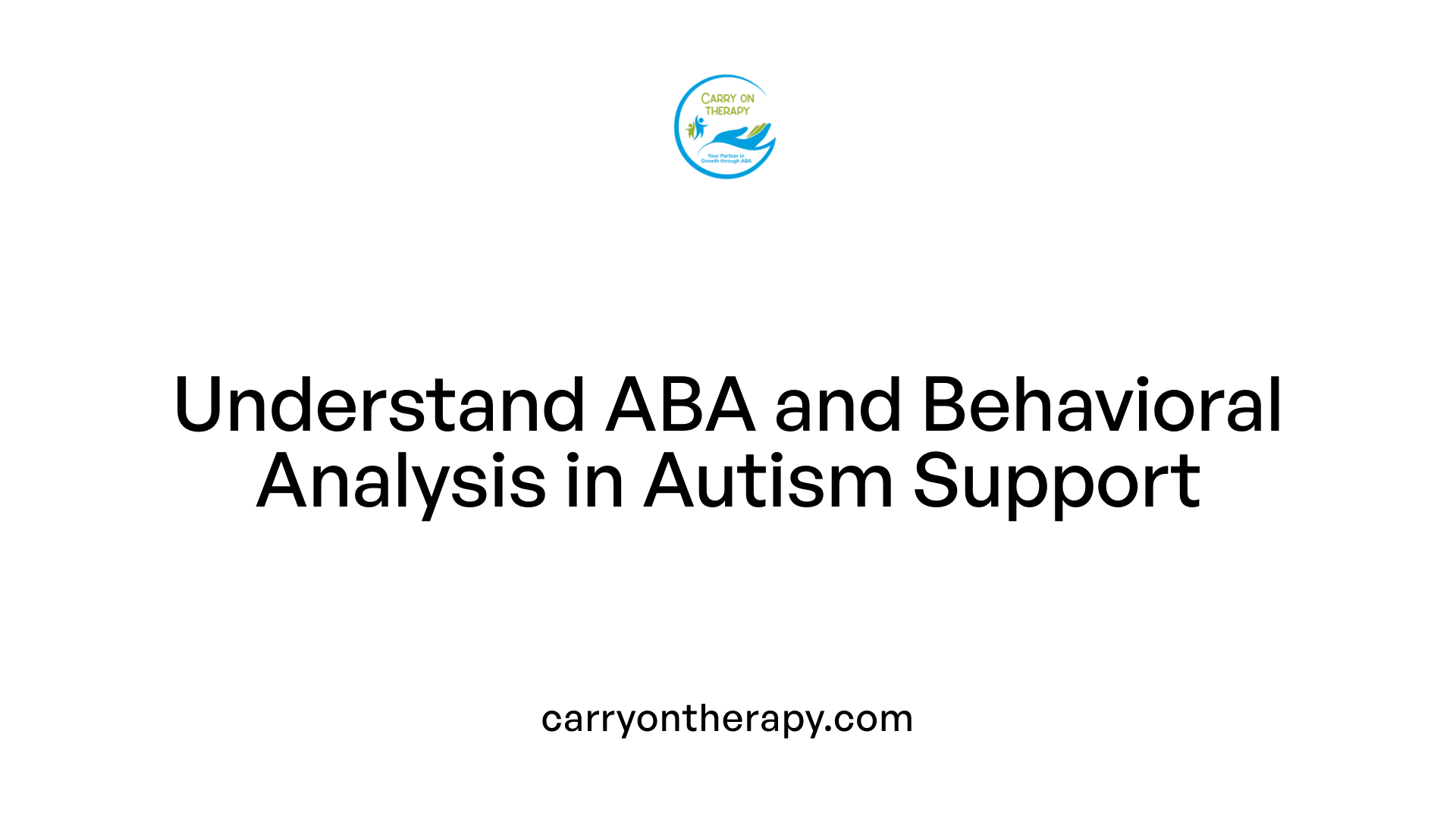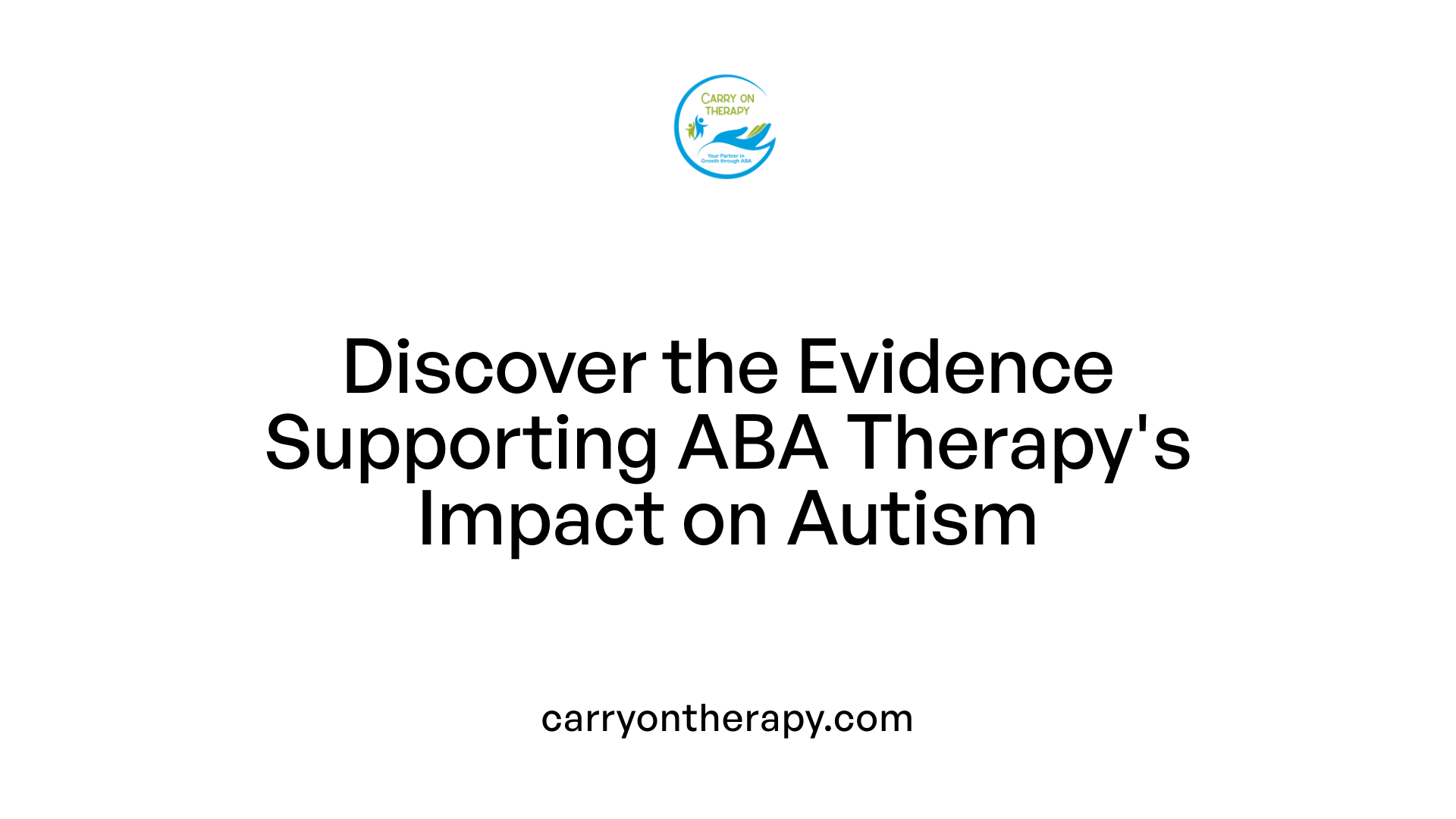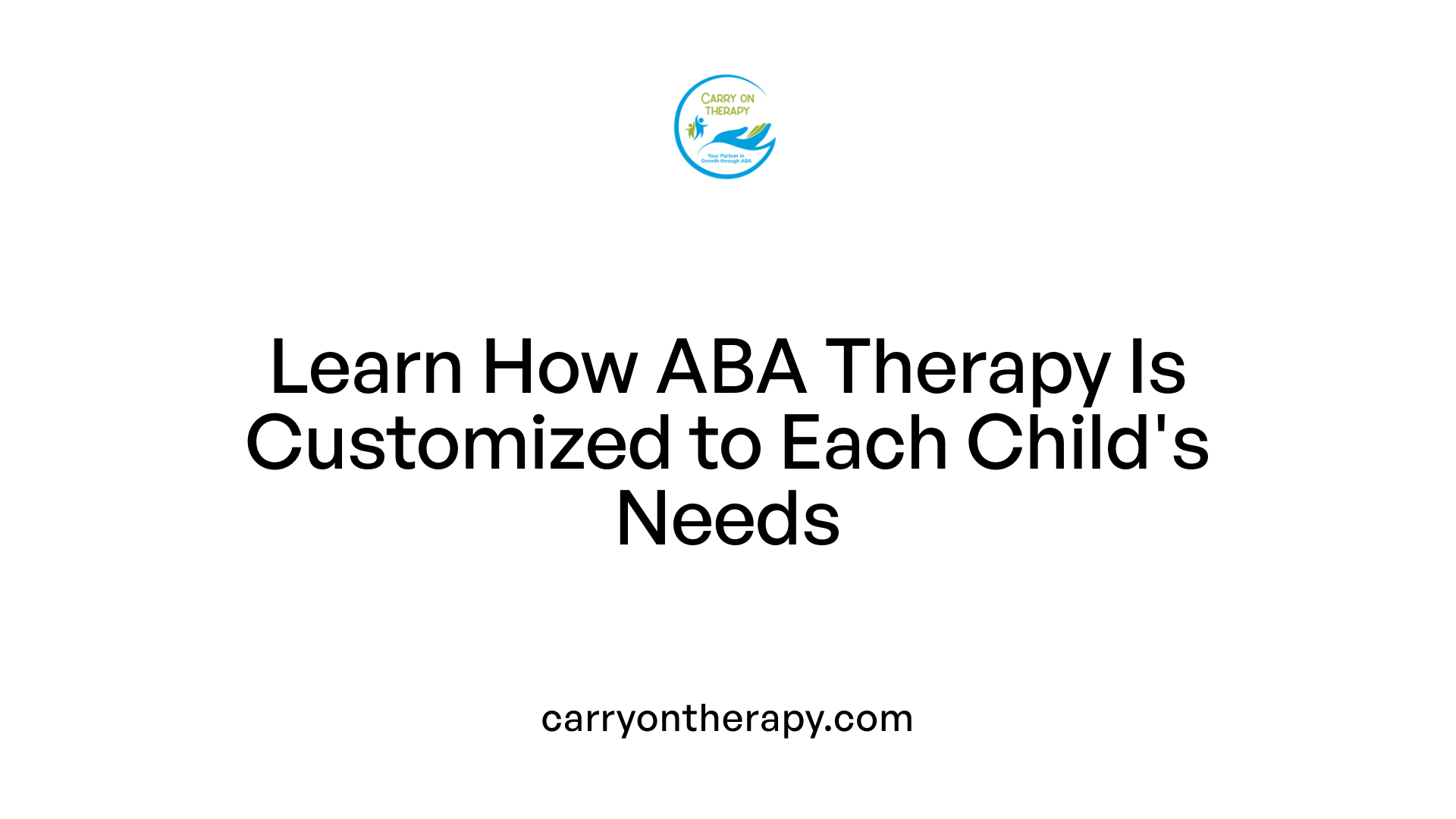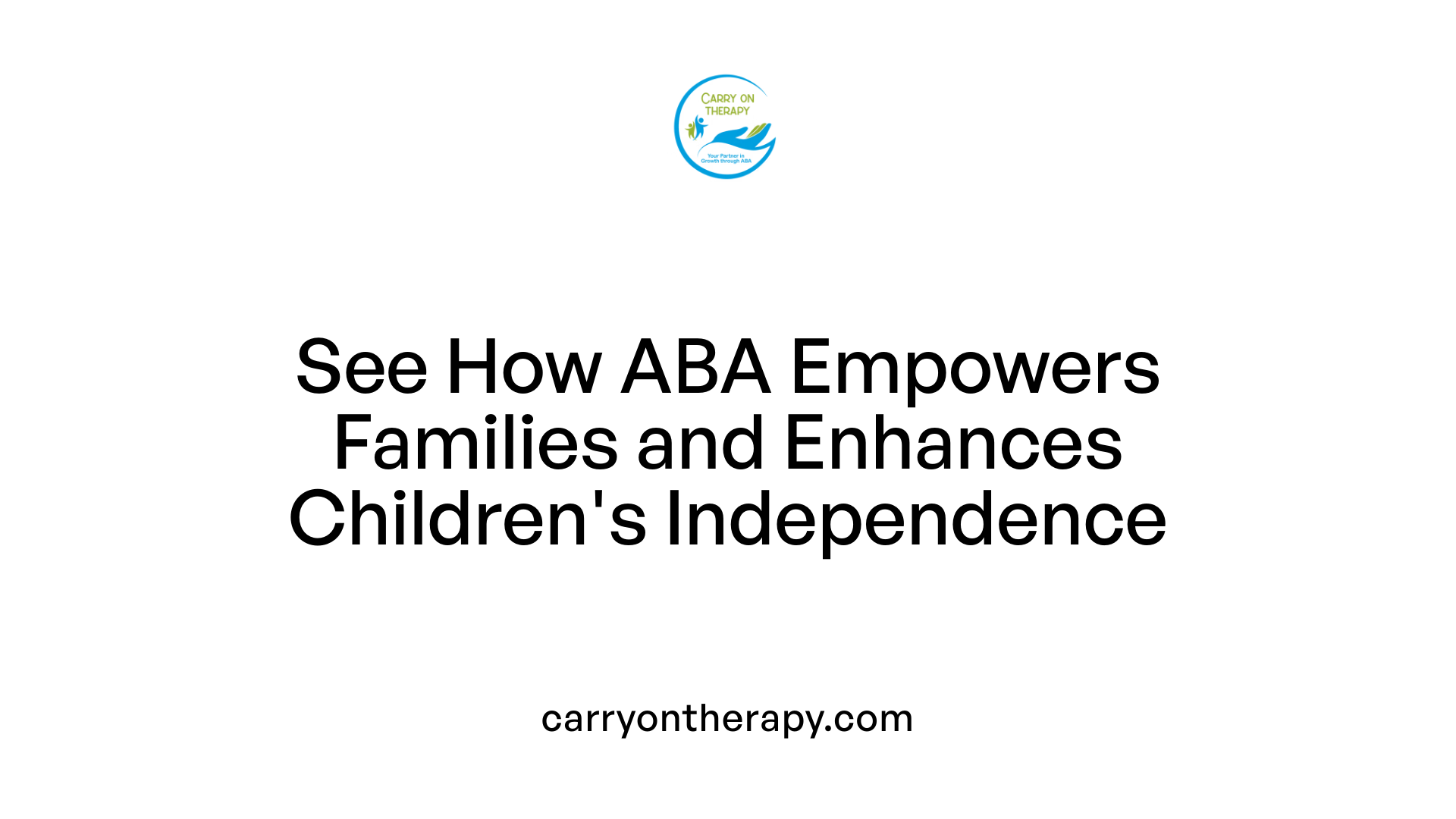Benefits of ABA Therapy
Transforming Lives: How ABA Therapy Empowers Individuals with Autism

Understanding ABA Therapy and Its Role in Autism Treatment
Applied Behavior Analysis (ABA) therapy is a scientifically grounded approach aimed at helping individuals with autism spectrum disorder (ASD) develop essential life skills, improve communication, and reduce challenging behaviors. Rooted in the principles of behavioral science, ABA has become a foundational therapy for autism, demonstrating strong evidence for its effectiveness. This article explores the benefits of ABA therapy, the professionals who provide it, the goals it targets, and the robust scientific support validating its use.
What Is ABA Therapy and How Does Behavioral Analysis Support Autism Treatment?

Definition of ABA Therapy
Applied Behavior Analysis (ABA) is a scientifically validated therapy based on the principles of learning and behavior. It is primarily used to assist individuals with autism spectrum disorder (ASD) by encouraging positive behaviors while reducing harmful or interfering ones. Rooted in behavior science, ABA systematically applies techniques to teach new skills, improve communication, and support developmental growth.
Role of Behavioral Analysis in Autism Therapy
Behavioral analysis plays a crucial role in autism therapy by breaking down behaviors into manageable parts using the ABC model—Antecedent, Behavior, and Consequence. This model helps therapists understand what triggers and follows behaviors, allowing them to modify environments to support positive outcomes. The approach is highly individualized, with assessments conducted by certified behavior analysts (BCBAs) who develop personalized treatment plans best suited to each child's unique strengths and needs.
Key Techniques: Positive Reinforcement and the ABC Model
A cornerstone of ABA is positive reinforcement, where desirable behaviors are encouraged through rewards such as praise, toys, or preferred activities. Therapists carefully monitor responses to reinforce skill development. The ABC model provides a framework for analyzing and modifying behaviors, ensuring interventions are both targeted and effective. Techniques like Discrete Trial Training (DTT) and Pivotal Response Treatment (PRT) offer structured and naturalistic ways to teach skills through repetition and play.
Individualized Program Design
Each ABA program is tailored and crafted based on initial assessments by a BCBA, focusing on the child's specific developmental needs and goals. This personalized approach enables the therapy to adapt to different settings such as home, school, or community environments. Goals may include improving communication, social interaction, daily living skills, and academic abilities, structured into achievable steps with consistent data collection for progress evaluation.
Focus Areas: Language, Social Skills, and Daily Living
ABA therapy targets several critical areas vital for independence and quality of life. Language and communication skills are enhanced through structured lessons and naturalistic interactions. Social skills training fosters peer engagement and understanding of social cues. Additionally, ABA helps develop essential daily living skills, such as self-care, toileting, and play, preparing children to actively participate in their communities and become more independent.
What is Autism Therapy and How Does Behavioral Analysis Play a Role in It?
Autism therapy encompasses various approaches aimed at improving social, communication, and behavioral skills in individuals with ASD. ABA stands out as an effective, evidence-based method, utilizing behavioral principles to tailor interventions that increase helpful behaviors and decrease challenges. Continuous assessment and reinforcement within ABA provide measurable progress, enhancing a child's ability to communicate, learn, and function successfully in daily life.
Who Provides ABA Therapy and How Are Services Delivered?

Profiles of ABA Providers Including BCBAs and Therapists
ABA therapy is typically provided by highly trained professionals dedicated to supporting individuals with autism. The primary experts are Board Certified Behavior Analysts (BCBAs), who conduct detailed assessments and design individualized treatment plans. These plans are then implemented by Registered Behavior Technicians (RBTs) or licensed therapists under the supervision of a BCBA to ensure consistent and effective intervention.
Settings for ABA Services (Home, School, Clinic)
ABA therapy is versatile and available across multiple settings, including the home, school environments, and specialized clinics. This flexibility allows the treatment to be personalized according to the child's unique needs, promoting learning in natural environments ranging from family routines to educational settings.
Role of Specialized Companies
Specialized companies play a significant role in delivering ABA services by employing or contracting qualified professionals like BCBAs and therapists. These organizations provide a structured framework that ensures the therapy is delivered systematically, complying with evidence-based standards while tailoring programs to individual goals.
Collaborative, Multidisciplinary Approach
ABA programs often involve collaboration among a multidisciplinary team that can include psychologists, speech therapists, educators, and medical professionals. This teamwork supports comprehensive care—addressing not only behavioral interventions but also communication, social skills, and other developmental areas.
Training and Professional Oversight of Therapy Implementation
Therapy sessions are closely monitored and adjusted by BCBAs who provide ongoing supervision and training to therapists and RBTs. This professional oversight is critical to maintaining high treatment fidelity, adapting strategies as the child progresses, and engaging families to support skill generalization across settings.
Common Goals of ABA Therapy in Supporting Children with Autism

What are the common goals set in autism therapy using behavioral analysis?
ABA therapy for children with autism centers on several important goals that support the child's overall development and independence.
One primary aim is improving communication skills. This includes enhancing both expressive abilities, such as speaking and using alternative communication methods, and receptive skills, like understanding language and social cues. Social skills development is also crucial, focusing on interaction skills such as turn-taking, sharing, recognizing emotions, and building friendships.
Another major goal is reducing challenging or interfering behaviors. ABA uses a detailed understanding of behavior through the ABC model (Antecedent, Behavior, Consequence) to replace harmful or disruptive actions with positive alternatives. Techniques like positive reinforcement reward desirable behaviors, increasing their occurrence.
Enhancing self-care and daily living skills is equally important. Children learn essential routines like dressing, toileting, eating, and more complex tasks such as meal preparation and time management. These skills foster greater independence and improve quality of life.
ABA therapy also targets development of independence and community participation. This can include learning to navigate social settings, understanding safety rules, managing money, and participating in group activities, all tailored to the child's ability and needs.
Importantly, every ABA program is personalized. A Board Certified Behavior Analyst (BCBA) conducts thorough assessments and gathers caregiver input to set goals that are meaningful and relevant for the child. This individualized approach ensures that therapy addresses unique strengths and challenges, promoting functional and socially significant improvements.
Overall, ABA therapy supports children with autism by strengthening communication, reducing difficulties, building essential life skills, encouraging self-sufficiency, and enhancing their ability to engage successfully in social and community environments.
Scientific Evidence Validating the Effectiveness of ABA Therapy

What evidence supports the effectiveness of behavioral analysis in autism therapy?
Extensive research has verified that Applied Behavior Analysis (ABA) is a scientifically backed approach to autism therapy. Studies consistently demonstrate ABA’s positive impact on critical skills such as language development, social interaction, and daily living abilities in children with autism.
Research demonstrating ABA's impact on language and social skills
Individualized ABA programs, designed around each child's unique needs, utilize techniques like positive reinforcement to foster meaningful progress. Research shows significant improvements in communication, emotional regulation, and social behaviors, often utilizing rigorous statistical analyses to confirm outcomes.
Long-term benefits with early intensive therapy
Early, intensive ABA intervention — typically involving more than 20 hours per week during the first years of life — leads to large developmental gains. Such early therapy reduces the need for special services later and supports lasting improvements in intellectual, social, and emotional functioning.
Recognition by major health authorities
ABA therapy enjoys recognition as an evidence-based best practice by leading health organizations including the US Surgeon General and the American Psychological Association. This consensus reflects ABA’s long-standing research foundation and demonstrated clinical success.
Use of data-driven, individualized programs
Board Certified Behavior Analysts (BCBAs) conduct thorough assessments and craft personalized ABA treatment plans. These data-driven programs systematically break down skills into achievable steps, utilize reinforcements effectively, and promote skill generalization, ensuring measurable progress.
Examples of improved cognitive and daily living outcomes
Studies highlight ABA’s role in enhancing intellectual functioning, language acquisition, socialization, and self-care skills such as toileting, dressing, and meal preparation. With consistent intervention, children demonstrate increased independence and ability to participate actively in family and community life.
| Aspect | Description | Outcome Example |
|---|---|---|
| Language and Social Skills | Individualized teaching with positive reinforcement | Improved conversational skills and peer interaction |
| Early Intensive Therapy | 20+ hours per week in early childhood | Enhanced cognitive development and fewer special services needed |
| Professional Oversight | Program developed by BCBAs | Tailored goals and measurable skill advancement |
| Daily Living Skills | Targeted self-care and functional routines | Increased independence in daily activities |
Personalization and Adaptability of ABA Therapy

Individualized Treatment Plans
ABA therapy is carefully tailored to fit each individual's unique needs. A Board Certified Behavior Analyst (BCBA) conducts a detailed assessment to develop a personalized treatment plan. This plan is designed to target specific goals such as communication, social skills, self-care, and academic progress, ensuring the therapy is meaningful and effective for each child.
Use of Specialized Methodologies
ABA incorporates various structured methodologies to address different learning styles and developmental needs. Discrete Trial Training (DTT) offers focused, one-on-one teaching; Pivotal Response Treatment (PRT) employs a more play-based, naturalistic approach that encourages the child's interests; while the Early Start Denver Model (ESDM) blends play with traditional ABA to target multiple goals simultaneously.
Adaptation to Child's Needs and Abilities
The flexibility of ABA allows it to be customized based on the child's developmental level and preferences. Therapists use prompts, reinforcements, and stepwise goal breakdowns to foster skill acquisition and generalization. This adaptability ensures children remain engaged and motivated, which supports better learning outcomes.
Flexibility of Therapy Settings
ABA therapy can be delivered in various environments including the home, school, and community settings. This versatility permits the integration of learning in natural surroundings, making it easier for children to apply new skills in everyday life.
Integration into Daily Routines and Community Life
ABA is designed to fit seamlessly into daily activities and community involvement. Lessons can align with a child's routines and social contexts, including religious practices and group interactions. This promotes fuller participation and supports independence in real-world situations.
Empowering Families and Children through ABA Therapy

How Does ABA Therapy Involve Parents and Caregivers?
ABA therapy actively involves parents and caregivers, empowering them with skills to support their child's development across various settings. Through parent training, families learn how to implement ABA techniques in daily routines, respond appropriately to behaviors, and reinforce positive skills. This involvement strengthens the parent-child bond and ensures consistency in learning beyond therapy sessions.
How Does ABA Build Independence and Functional Skills?
A central goal of ABA is to increase independence in children with autism by teaching essential life skills. These include self-care tasks like dressing, toileting, eating, and more complex activities such as meal preparation and time management. By breaking down goals into manageable steps and using positive reinforcement, ABA helps children gradually perform skills independently, boosting their confidence and autonomy.
How Does ABA Promote Social Engagement and Peer Interaction?
ABA therapy improves social skills by teaching children how to interpret body language, engage in reciprocal conversations, and recognize nuances such as sarcasm. Group learning sessions within ABA foster peer interactions and help children with autism build friendships. By practicing social behaviors in supportive environments, children become more comfortable and capable in everyday social settings.
How Does ABA Enhance Emotional Regulation and Behavioral Management?
ABA incorporates strategies to help children cope with emotions and express feelings constructively. Techniques like natural environment training and play therapy teach children behavioral management skills and understanding of social cues. This preparation aids children in handling real-life situations with greater emotional control and confidence.
What Are the Long-Term Benefits of ABA for Quality of Life and Self-Advocacy?
Early and intensive ABA therapy has been shown to produce lasting improvements in communication, daily living skills, social functioning, and intellectual development. As children gain independence and social competence, they are better equipped to advocate for themselves and participate actively in society. Families report enhanced quality of life due to increased functional abilities and reduced challenging behaviors.
| Aspect | Description | Impact on Family and Child |
|---|---|---|
| Parental Involvement | Training parents to implement ABA strategies at home and in the community | Strengthens consistency; bolsters family confidence |
| Independence and Functional Skills | Teaching essential self-care and complex life skills | Increases child autonomy and confidence |
| Social Engagement | Facilitating friendships and understanding social cues | Enhances peer interaction and social comfort |
| Emotional Regulation | Techniques for coping with emotions and managing behavior | Prepares children for real-world challenges |
| Long-Term Benefits | Improvements in communication, independence, and self-advocacy | Promotes lifelong quality of life and community participation |
The Transformative Impact of ABA Therapy
ABA therapy represents a cornerstone in autism treatment, offering evidence-based, individualized interventions that significantly enhance communication, socialization, and independence for individuals with autism. Delivered by skilled professionals, ABA’s structured yet flexible approach harnesses behavioral science principles to foster meaningful skill development while reducing challenging behaviors. The strong scientific foundation supporting ABA underscores its role as a best practice, particularly when started early and tailored to the individual's unique needs. Beyond improving skills, ABA empowers families and children alike, promoting confidence, self-advocacy, and fuller participation in everyday life. As awareness and access grow, ABA therapy continues to transform lives, helping those with autism reach their full potential.







